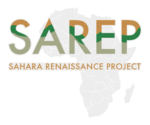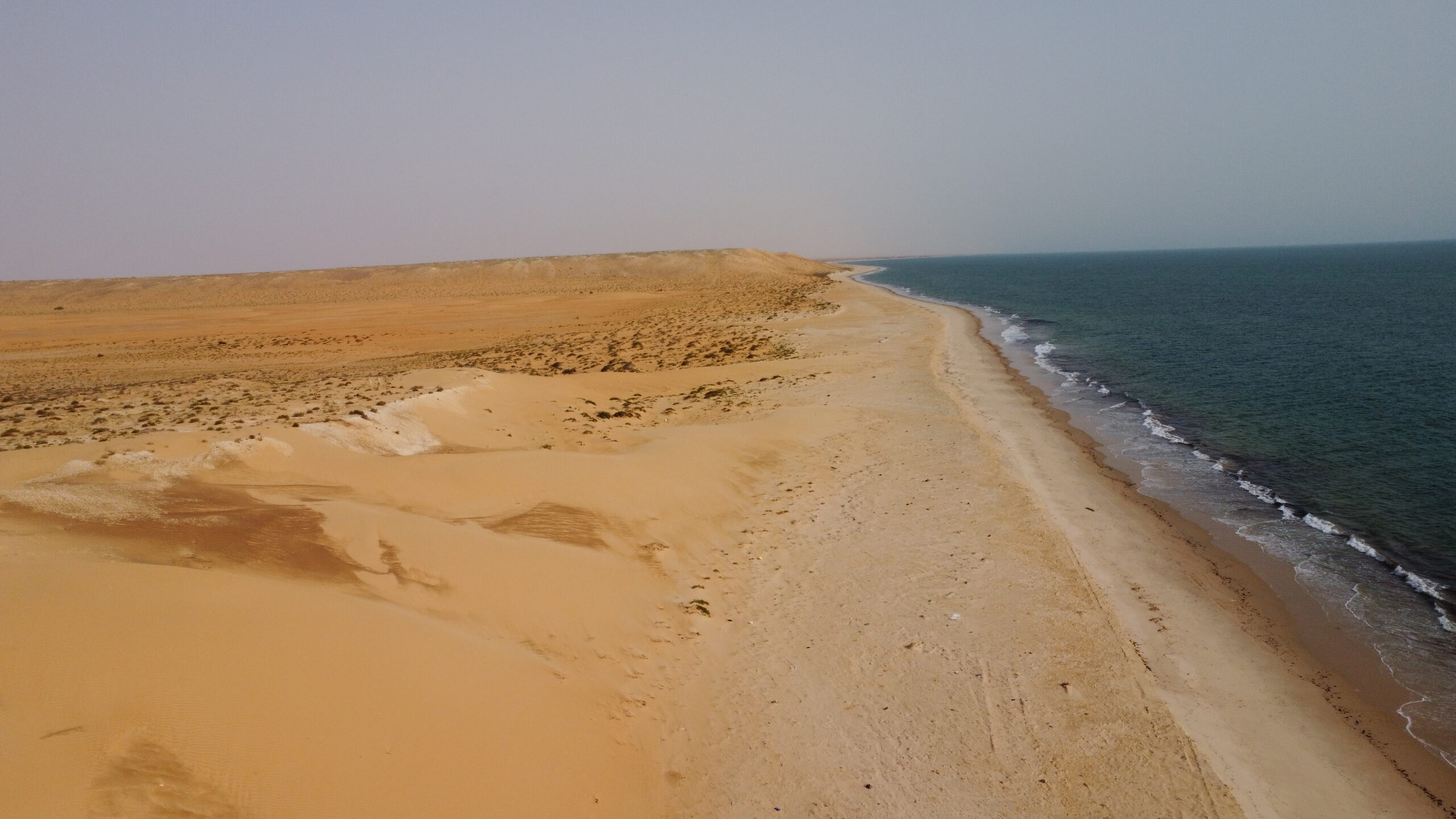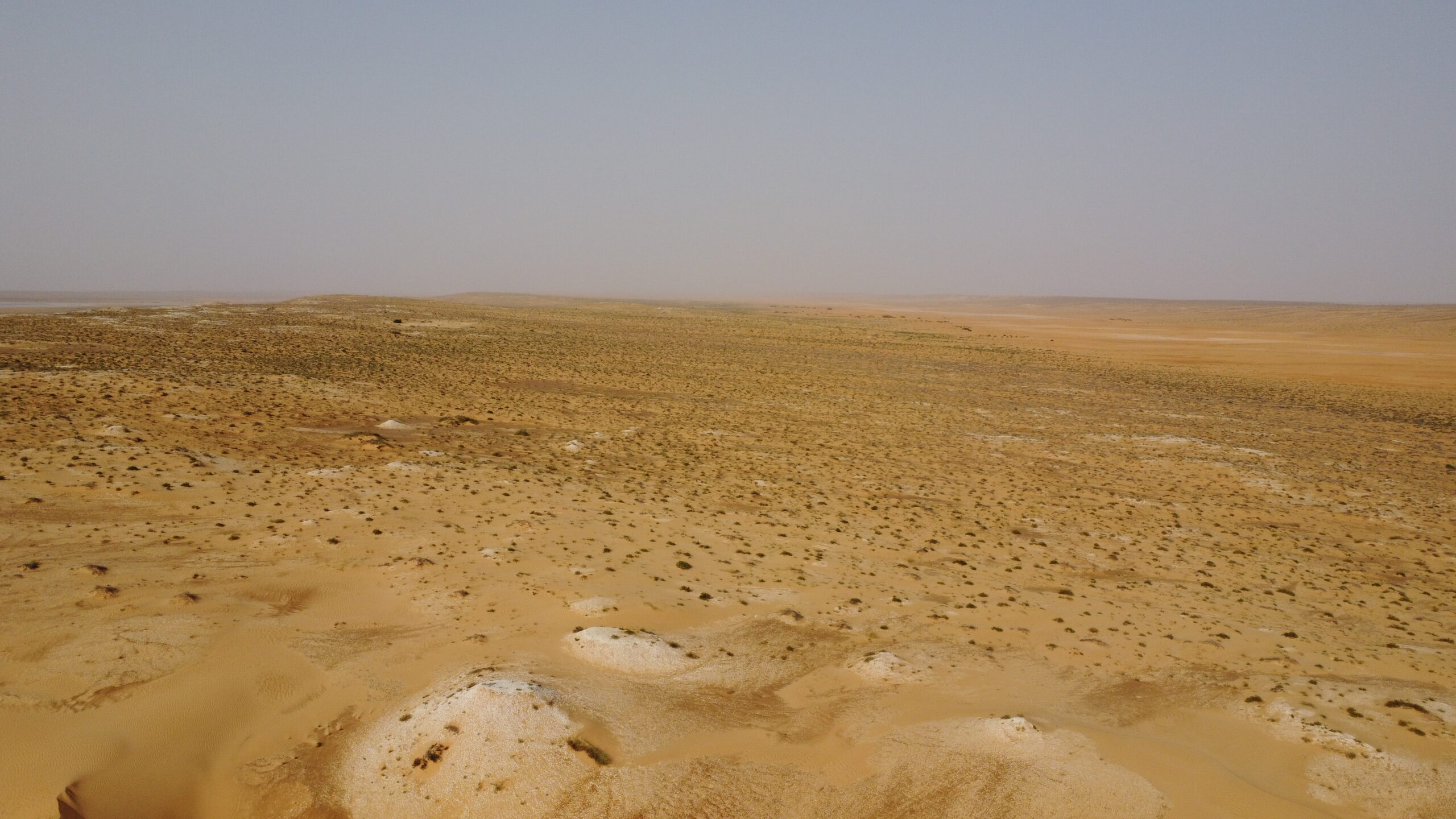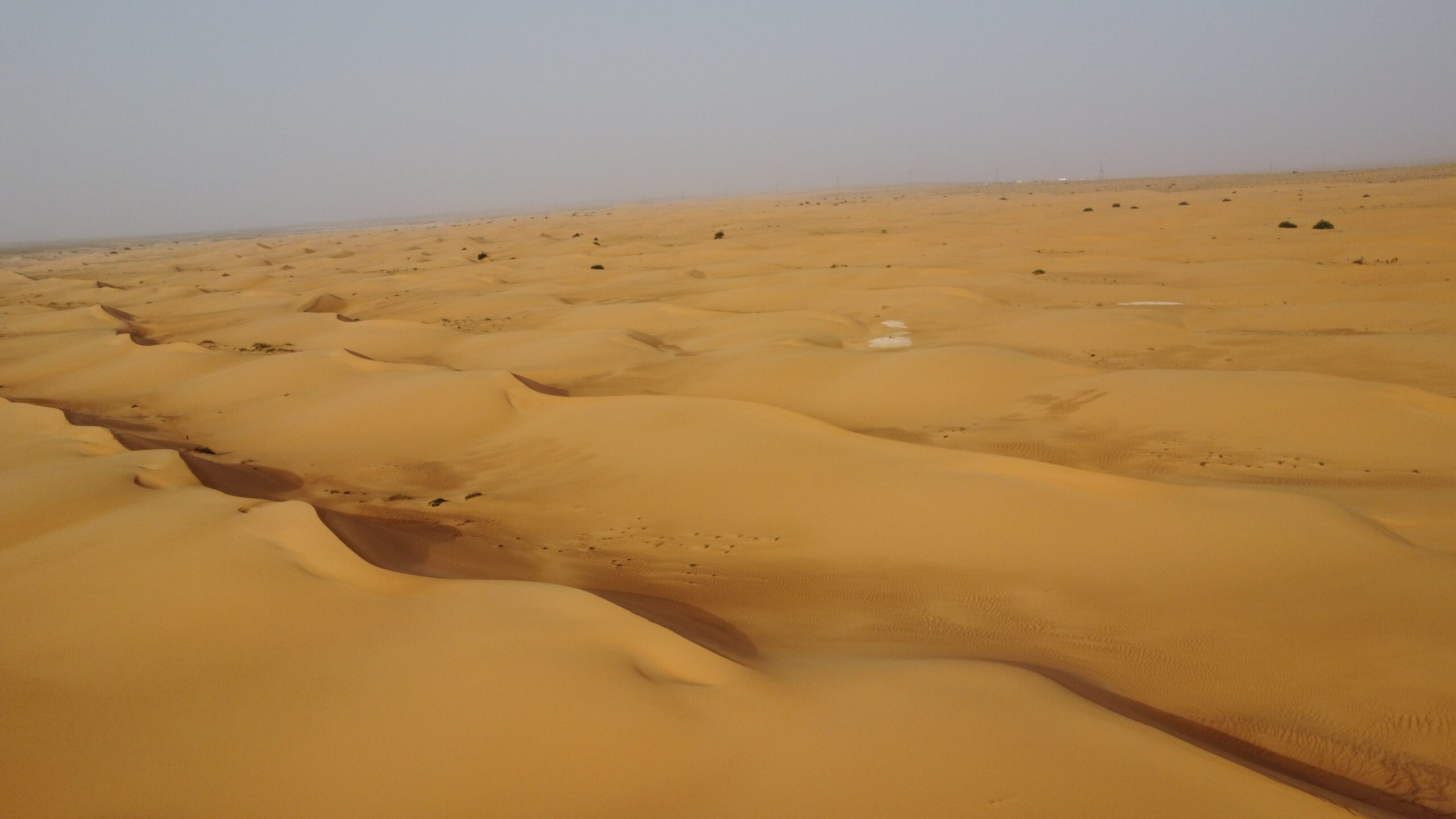PRODUCTION SYSTEM
Unfolding Synergies
In SAREP, synergies between the water, energy, agriculture and industrial sector will be realized. Renewably sourced energy is used to produce freshwater from seawater via reverse osmosis.
The water on the one hand is used for irrigating an agroforestry system with a large variety of product outputs. On the other hand, it is used for supplying bordering cities and mining sites with drinking water.
Furthermore a green hydrogen production is aspired. The Hydrogen can be used together with a renewably sourced fuel from the agroforestry system to produce a refined pre-product for steel production.
Potentially, the brine, left over from fresh water production can be used for the extraction of minerals.
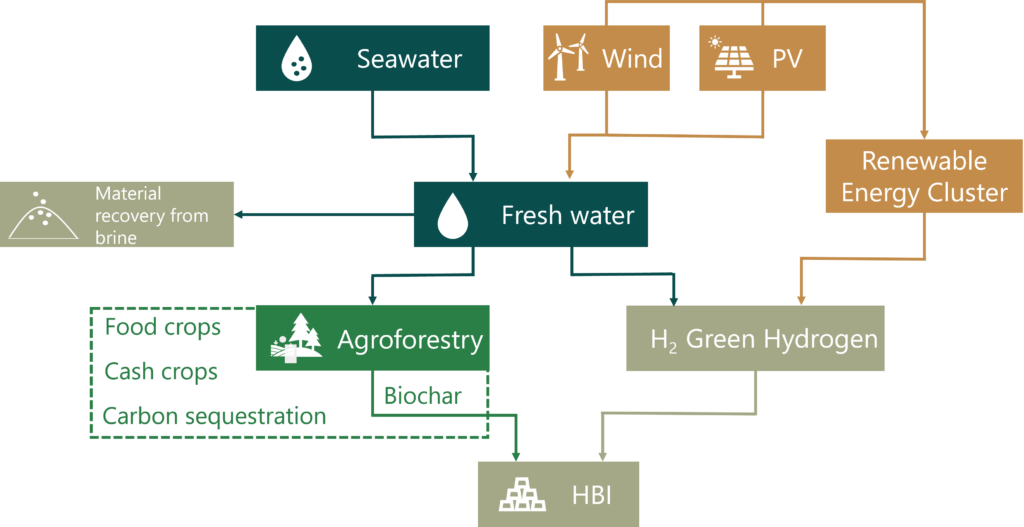
lOCATION

2 Million Hectares at the Coast of Mauritania
The current project area amounts 2 million hectares at the coast of Mauritania. It is located on a sand dune of approximately 50 km width and 400 km length. It is connected with Nouakchott, Mauritania´s capital that is situated about 130 km south, via the N2 highway.
In the northern direction, borders the national park “Parc National du Banc D‘Arguin“.
Apart from excellent conditions for solar and wind energy production as well as seawater desalination, the project site offers decent transport conditions the capital, regional markets and Europe.

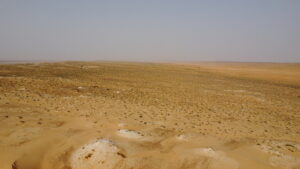

UTILITY
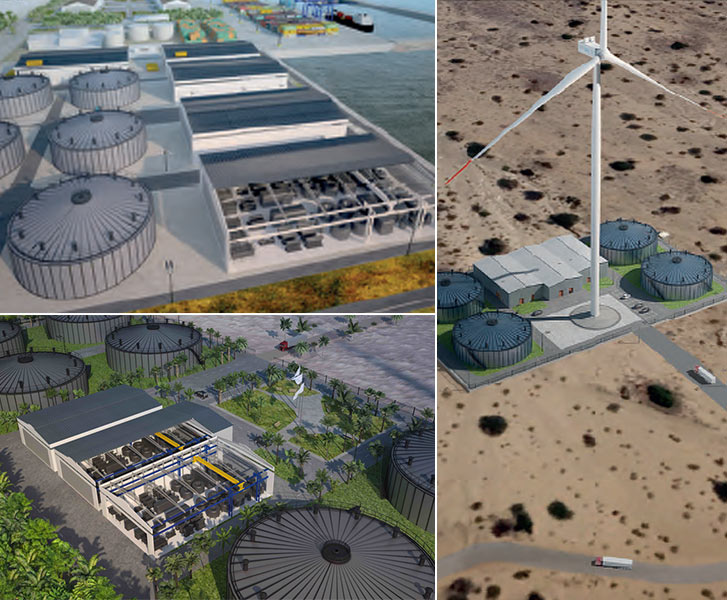
Renewable Energies & Desalination
With Mauritania´s climate being determined by the Sahara desert and trade winds, ideal conditions for large-scale electricity production at competitive prices are given.
As the electricity costs are one of the main determinants for the economic feasibility of reverse osmosis desalination plants, also a large-scale freshwater production at competitive prices can be ensured.
For the 2,000,000 ha agroforestry system, an annual water consumption of 22,000,000,000 m³ is estimated.
AGROFORESTRY
Greening the desert
The agroforestry system will be based on modular plots of 10,000 ha each and can be customized accordingly.
For the beginning, two versions are available. The different accumulation of the area reserved for specific crops leads to a different product focus. In general, heat-resistant crop species are selected offering a wide range of potential products and by-products apart from those mentioned here.
One important condition for both versions is the production of staple food on an area of about 1,000 ha. The produced food should primarily be sold on local markets in order to increase food security in Mauritania.

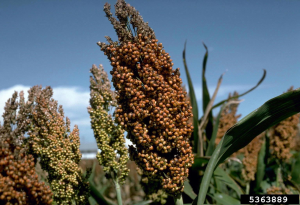
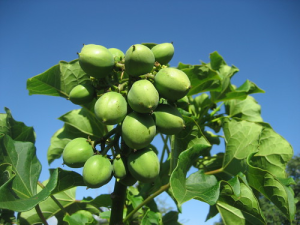
Basic Plot Versions
Version 1 has 3,000 ha assigned for a mix of various woody plants that are arranged as a shelterbelt for the 6,000 ha of Jatropha. The main products of this version are Jatropha oil and carbon removal certificates that are derived from the carbon sequestration of the shelterbelt.
Version 2 focuses fully on 9,000 ha of woody plants. Thus, the main products of this version are carbon removal certificates and wood pellets.
Each plot includes a trickle irrigation system, agriculture machinery and processing facilities as well as accommodation for workers and a PV-system for decentralized energy production.

INDUSTRY
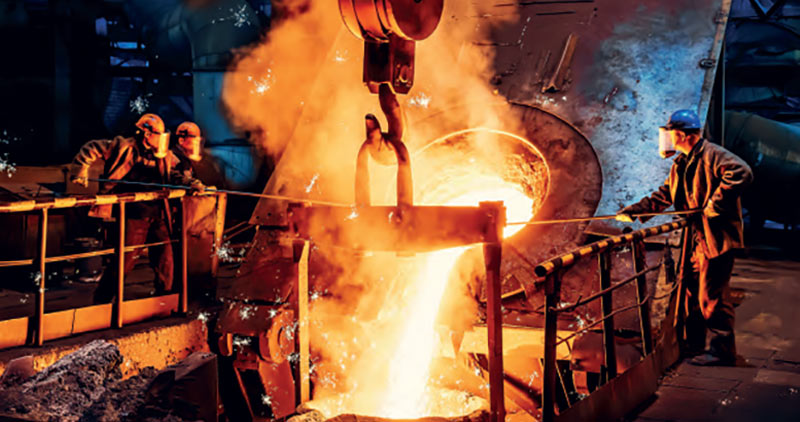
Hot Briquetted Iron
Mauritania already has a big mining industry for iron ore. Until now, most of it was exported at a raw material stage. Utilizing green Hydrogen and an additional, locally sourced renewable fuel source could add an additional step in the production chain of Mauritania´s industry. The resulting material, Hot Briquetted Iron is a more valuable, more transport-efficient and more sustainable product.
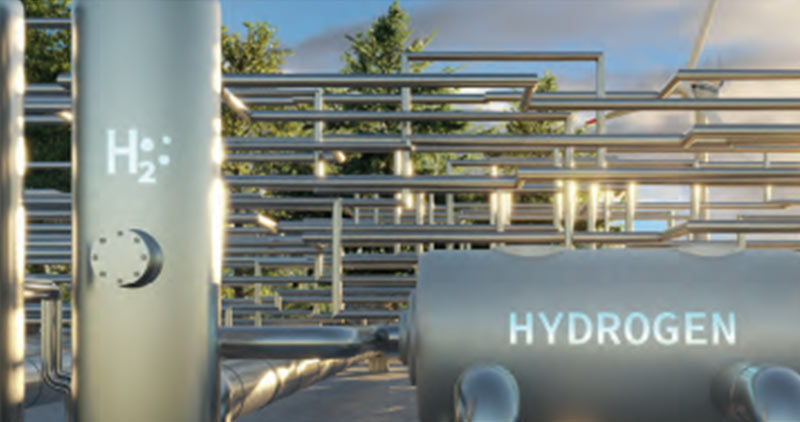
Hydrogen
Green Hydrogen can be sourced from renewable energies and the desalinated seawater. Of course, this could serve as an asset for export, but an utilization in the local industry is similarly attractive.
INFRASTRUCTURE
A project of this scale naturally requires the development of infrastructure. It is intended to provide accommodation for workers and respective communal facilities. To enhance community building, education institutions and other structures for health care, security and public transport are planned.
Also, a transport network for the finished products is to be established. The development of roads and, in the long term, of an industrial port is planned to lever the site to an international trading hub for green products.

